home > articles > Theology > The Significance of the 5 Stages of the Imago Dei to the Problem of Evil
WHERE DID THE DEVIL REALLY COME FROM?
The story goes that the devil was once an archangel who led a rebellion with one third of the angels in an attempt to overthrow God and take control of the throne. While most Christians have accepted this story, it lacks credible Biblical support. By discovering the Biblical case for the origin of the “Evil One” we are in a better position to understand the world we live in and make sene of it. To begin to understand the Biblical revelation concerning the devil, we must gain an understanding of the Biblical significance of the imago Dei.
The Redemptive Significance of each Phase of the Imago Dei
I. God’s Eternal Plan
A. The initial two phases of the imago Dei
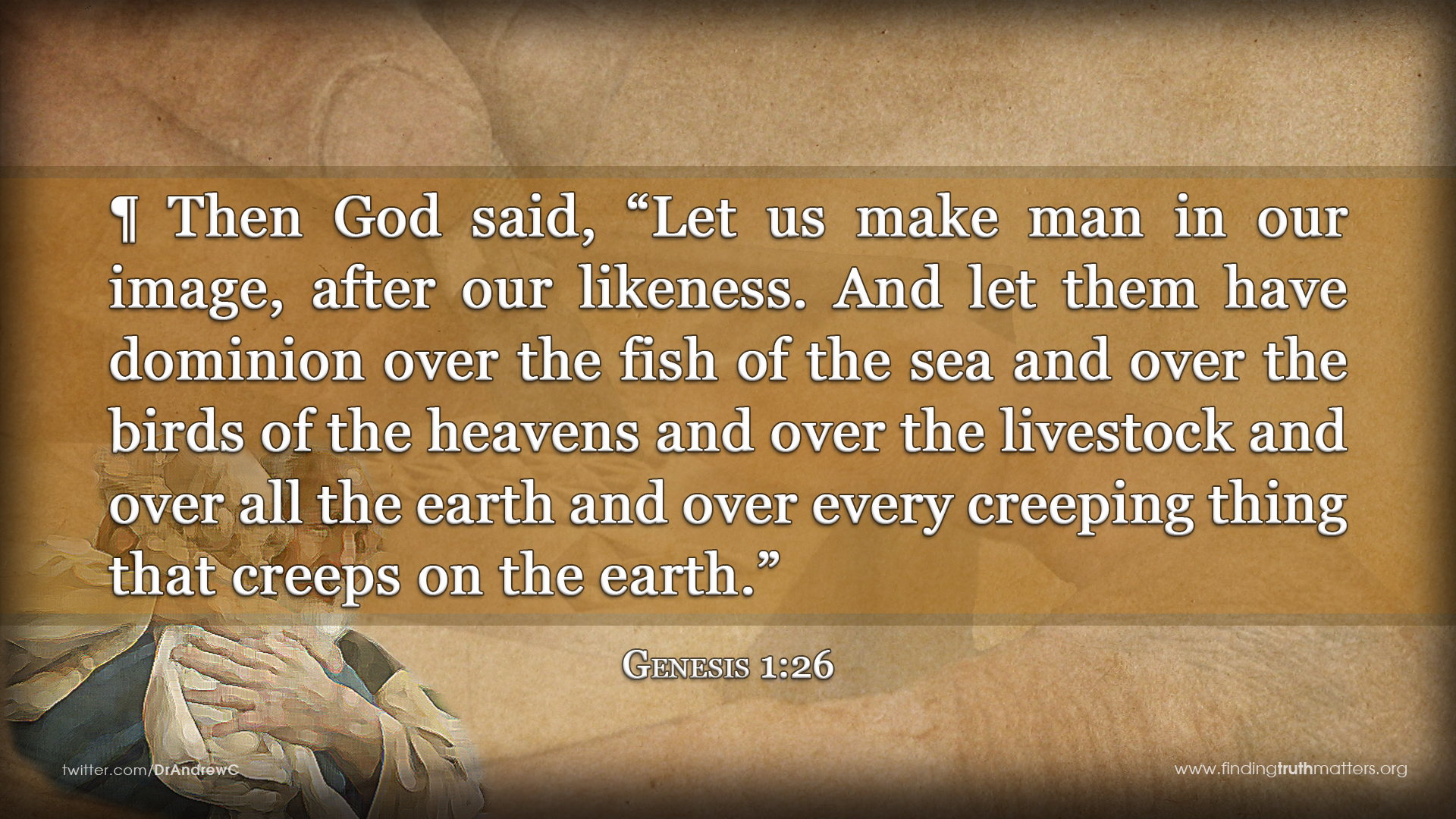
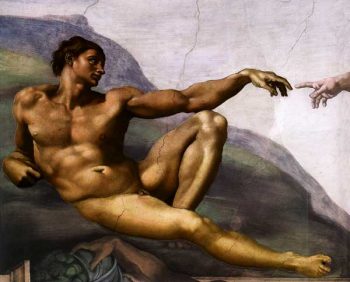 Even before any evil had even been thought of, God had a plan to redeem His creation and vanquish evil (Eph. 3:9; Col. 1:26). The record of Scripture is the story of God’s plan of redemption. The starring role in this story was foreshadowed by God’s introduction of the imago Dei (“image of God”). The initial imago Dei was Adam (אָדָ֛ם, Gen. 1:27; 2:7), but the Scriptures also reveal that God appointed others to fulfil this redemptive role. In fact, God’s eternal plan to vanquish evil from the universe involved each of the phases of the imago Dei.
Even before any evil had even been thought of, God had a plan to redeem His creation and vanquish evil (Eph. 3:9; Col. 1:26). The record of Scripture is the story of God’s plan of redemption. The starring role in this story was foreshadowed by God’s introduction of the imago Dei (“image of God”). The initial imago Dei was Adam (אָדָ֛ם, Gen. 1:27; 2:7), but the Scriptures also reveal that God appointed others to fulfil this redemptive role. In fact, God’s eternal plan to vanquish evil from the universe involved each of the phases of the imago Dei.
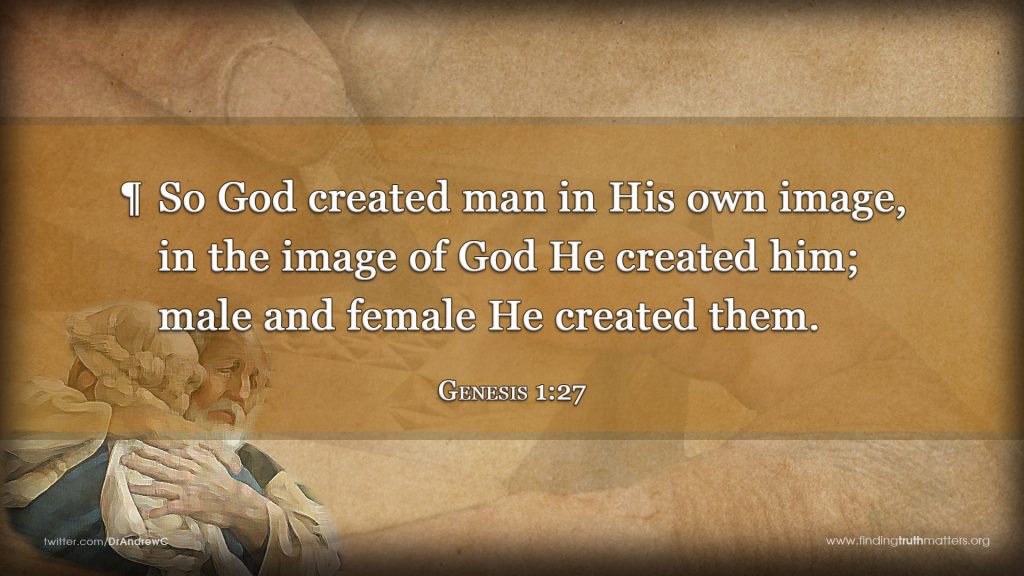
B. The creation of the Ish’ah (the woman)
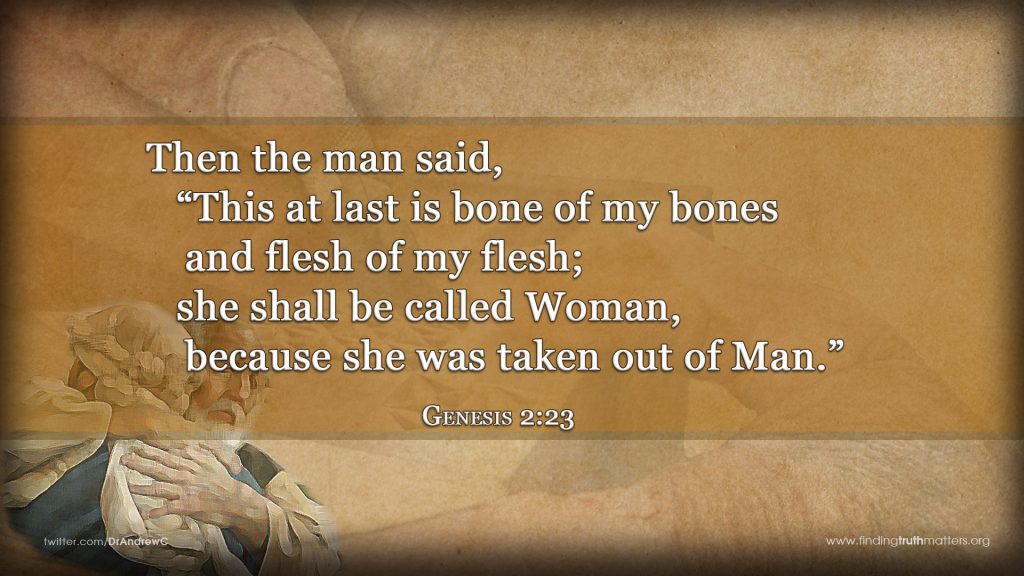 A closer examination of Genesis 1:27 in the light of the more detailed creation-of-mankind-account in Genesis 2 reveals that the declaration of the man and the woman (Heb. אִשָּׁ֔ה, Ish’ah) – not just the man on his own – was the moment when God declared that He had created the imago Dei. This is reaffirmed in Genesis 5:1-2, “This is the book of the generations of Adam. When God created man, He made him in the likeness of God. Male and female He created them, and He blessed them and named them Man when they were created.” This reinforces the concept that the imago Dei consisted of the man and the woman – and quite possibly, not until the Ish’ah was created. In fact, the creation of the Ish’ah, the second phase of the imago Dei, triggered a critical event in God’s plan of redemption.
A closer examination of Genesis 1:27 in the light of the more detailed creation-of-mankind-account in Genesis 2 reveals that the declaration of the man and the woman (Heb. אִשָּׁ֔ה, Ish’ah) – not just the man on his own – was the moment when God declared that He had created the imago Dei. This is reaffirmed in Genesis 5:1-2, “This is the book of the generations of Adam. When God created man, He made him in the likeness of God. Male and female He created them, and He blessed them and named them Man when they were created.” This reinforces the concept that the imago Dei consisted of the man and the woman – and quite possibly, not until the Ish’ah was created. In fact, the creation of the Ish’ah, the second phase of the imago Dei, triggered a critical event in God’s plan of redemption.
C. The origin of the Evil One
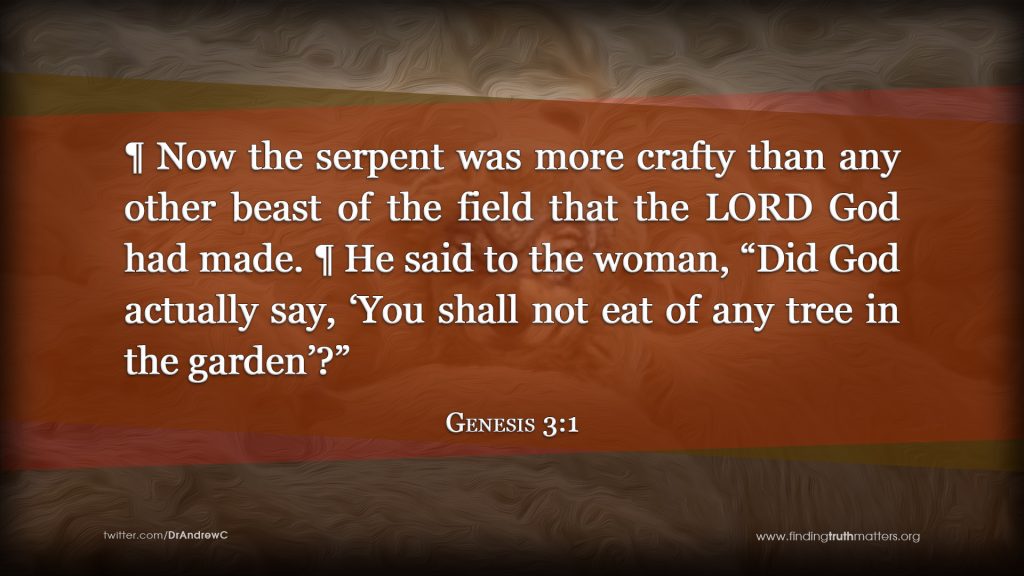 The Bible is remarkably silent about the origin of the Evil One (the term used by Christ in Matt. 13:19, 38; and, John 17:15 to describe the devil). Oddly, it is not until the last book of the bible that we are told about the identity of the “serpent” in Genesis 3. “And the great dragon was thrown down, that ancient serpent, who is called the devil and Satan, the deceiver of the whole world—he was thrown down to the earth, and his angels were thrown down with him” (Rev. 12:9). Heiser (2020) notes that this account in Revelation 12, about the serpent’s identity, cannot explain his origin because the episode it describes occurs after the ascension of Christ (244). The allusions to the prelapsarian state of the Evil One are possibly seen in Isaiah 14:12-14 and Ezekiel 28:2-10. At the very least, both of these references seem to indicate that the original state of the Evil One reveals he was a heavenly being who was created as a good and powerful being made to serve Yahweh and who was originally present in Eden. While we are not explicitly told in Scripture what his act of pride was that led to his rebellion, we can surmise it from the Genesis 2 and 3 passages and support this from Rabbinic traditions that is was connected to the creation of the woman (Morris and Scharl 2021). This is also supported if we simply take the progressive revelation contained in the opening chapters of Genesis, where the introduction of the Evil One (“the serpent”, Gen. 3:1) occurs with the creation of the Ish’ah – the woman.
The Bible is remarkably silent about the origin of the Evil One (the term used by Christ in Matt. 13:19, 38; and, John 17:15 to describe the devil). Oddly, it is not until the last book of the bible that we are told about the identity of the “serpent” in Genesis 3. “And the great dragon was thrown down, that ancient serpent, who is called the devil and Satan, the deceiver of the whole world—he was thrown down to the earth, and his angels were thrown down with him” (Rev. 12:9). Heiser (2020) notes that this account in Revelation 12, about the serpent’s identity, cannot explain his origin because the episode it describes occurs after the ascension of Christ (244). The allusions to the prelapsarian state of the Evil One are possibly seen in Isaiah 14:12-14 and Ezekiel 28:2-10. At the very least, both of these references seem to indicate that the original state of the Evil One reveals he was a heavenly being who was created as a good and powerful being made to serve Yahweh and who was originally present in Eden. While we are not explicitly told in Scripture what his act of pride was that led to his rebellion, we can surmise it from the Genesis 2 and 3 passages and support this from Rabbinic traditions that is was connected to the creation of the woman (Morris and Scharl 2021). This is also supported if we simply take the progressive revelation contained in the opening chapters of Genesis, where the introduction of the Evil One (“the serpent”, Gen. 3:1) occurs with the creation of the Ish’ah – the woman.
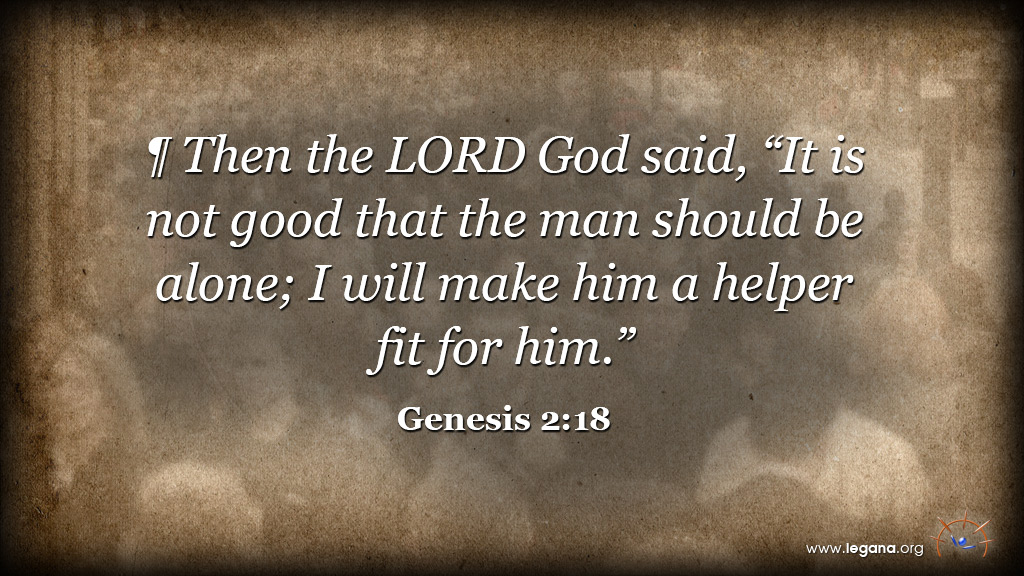
Considering that Adam was alone for some considerable time examining and naming each of the animals, which was an act of exercising dominion over creation (Gen. 1:26), for at one to two years (Ross 2014, 105) it is remarkable that the Evil One did not tempt Adam until the woman was created. Literature arising during the intertestamental period which recorded long-held Jewish traditions about the coinciding fall of the Evil One with the creation of the Ish’ah confirms this. Texts such as Wisdom of Solomon 2:24 and The Life of Adam and Eve 12–14 describe Satan’s fall being prompted by his envy of the Ish’ah and her ability to create immortal, divine-image-bearers. This is an elegant explanation for the origin of the Evil One and fits with the biblical data. It is worth noting that one of the effects of the fall of mankind was the domination of man over the woman as seen by Adam naming the Ish’ah, Eve (Gen. 3:20). As mankind populated the earth and wickedness increased (Gen. 6:5), God purposed to re-appoint a new people, a nation, to be His son and divine image bearers.
II. The Call of Israel
A. A light to the nations
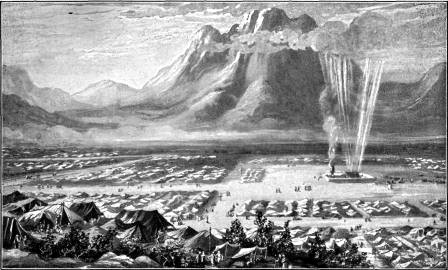 The imago Dei became identified with the synonym the son of God. Adam was designated as the son of God in Luke 3:38. God then described Israel as His son in Exodus 4:23 and later in Hosea 11:1, which reveals that Israel was the third phase of the imago Dei and as such they were called to be a redemptive light to the nations (Isa. 42:6; 49:6).
The imago Dei became identified with the synonym the son of God. Adam was designated as the son of God in Luke 3:38. God then described Israel as His son in Exodus 4:23 and later in Hosea 11:1, which reveals that Israel was the third phase of the imago Dei and as such they were called to be a redemptive light to the nations (Isa. 42:6; 49:6).
B. A nation exiled and dispersed
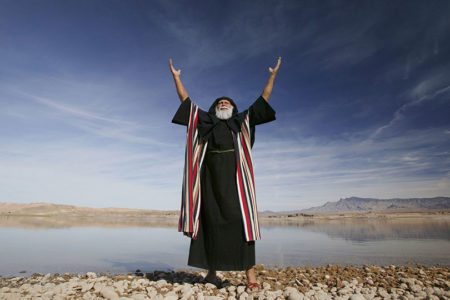 Israel’s responsibility to represent God and to be a light to the nations was never fully realised due to their unfaithfulness to God (Jer. 3:7, 10). The once united nation under kings David and Solomon, became two nations with Ephraim to the north (also known as Israel) and Judah to the south. From the outset of their secession from Judah, king Jeroboam “drove Israel from following the LORD and made them commit great sin” (2Kings 17:21). Failing to live up to their covenant with the Lord led to the covenantally agreed consequence of being expelled from their promised land (Lev. 20:22) and eventually being dispersed, “The people of Israel walked in all the sins that Jeroboam did. They did not depart from them, until the LORD removed Israel out of his sight, as he had spoken by all his servants the prophets. So Israel was exiled from their own land to Assyria until this day” (2Kings 17:22-23). The people of Judah eventually also broke their covenant with God and were similarly exiled to Babylon (2Chron. 36:20). But the prophets not only warned the people of God of the Lord’s pending judgment, they also prophesied of the hope that the Lord would send who would be the true imago Dei and the son of God (Isa. 9:6).
Israel’s responsibility to represent God and to be a light to the nations was never fully realised due to their unfaithfulness to God (Jer. 3:7, 10). The once united nation under kings David and Solomon, became two nations with Ephraim to the north (also known as Israel) and Judah to the south. From the outset of their secession from Judah, king Jeroboam “drove Israel from following the LORD and made them commit great sin” (2Kings 17:21). Failing to live up to their covenant with the Lord led to the covenantally agreed consequence of being expelled from their promised land (Lev. 20:22) and eventually being dispersed, “The people of Israel walked in all the sins that Jeroboam did. They did not depart from them, until the LORD removed Israel out of his sight, as he had spoken by all his servants the prophets. So Israel was exiled from their own land to Assyria until this day” (2Kings 17:22-23). The people of Judah eventually also broke their covenant with God and were similarly exiled to Babylon (2Chron. 36:20). But the prophets not only warned the people of God of the Lord’s pending judgment, they also prophesied of the hope that the Lord would send who would be the true imago Dei and the son of God (Isa. 9:6).
C. Restoration prophesied
God’s plan of redemption involved a transition from the Old Covenant to the New Covenant (Jer. 31:31-34). It included a remnant of Israel being restored to the promised land where the temple could be rebuilt and the sacrificial ceremonies reinstituted after their exile was over. This would then set the stage for the Mah’she’akh – the Messiah – who would fulfil what the promised land, the temple, the priesthood and sacrifices had been foreshadowing (Heb. 10:1).
III. The Exact Image of God
A. Mah’she’akh (Messiah)
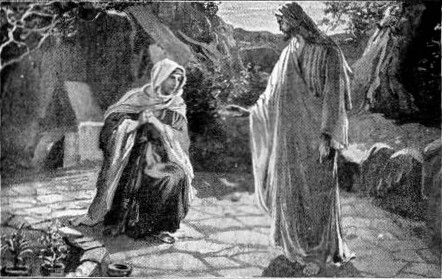 God’s plan of redemption transitioned to the exact and true image of God- the Mah’she’akh – the Christ (2 Cor. 4:4; Heb. 1:3). He was the third phase of the imago Dei revealed in the Scriptures. He would fulfil all that Adam, the woman, and Israel had been meant to fulfil (1 Cor. 15:45-49). In fact, His life would uncannily parallel much the history of Israel (note, for example, Matt. 2:15) yet, unlike Israel, He would remain faithful to God. His redemptive work would undo the effects of the fall of mankind.
God’s plan of redemption transitioned to the exact and true image of God- the Mah’she’akh – the Christ (2 Cor. 4:4; Heb. 1:3). He was the third phase of the imago Dei revealed in the Scriptures. He would fulfil all that Adam, the woman, and Israel had been meant to fulfil (1 Cor. 15:45-49). In fact, His life would uncannily parallel much the history of Israel (note, for example, Matt. 2:15) yet, unlike Israel, He would remain faithful to God. His redemptive work would undo the effects of the fall of mankind.
1. Women
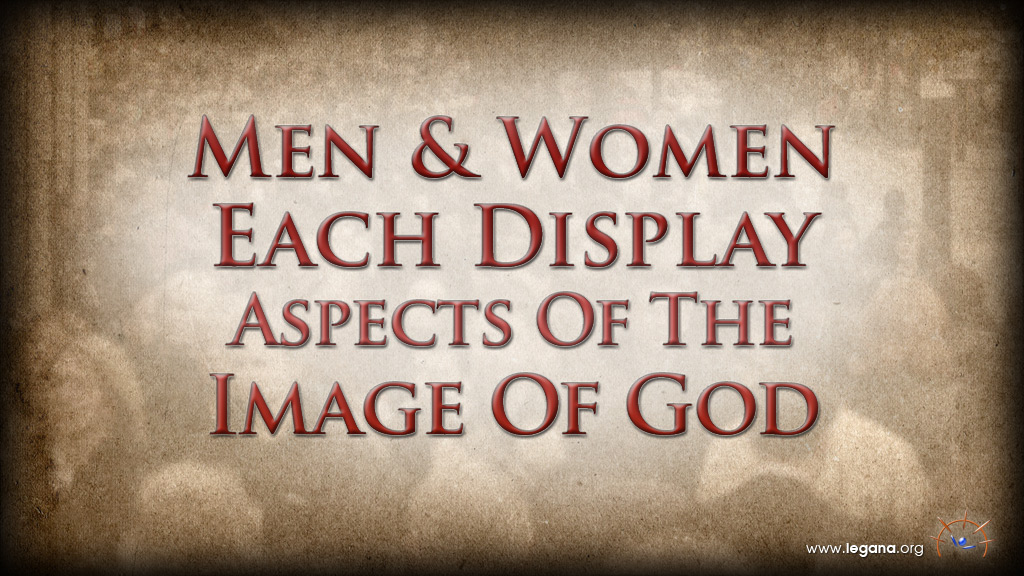 God’s plan of redemption through the Messiah particularly involved the redemption of womankind. Five unlikely, yet redeemed, women are featured in the lineage of Christ recorded in Matthew 1. Throughout Christ’s ministry women featured prominently as the recipients of miracles (for example, Matt. 9:20-25). Women often came under the protective care of Christ (Matt. 5:28; Jn. 8:11). Christ ministered directly to individual women (Jn. 4). Women travelled with Jesus and His disciples (Matt. 27:55). Women were given the honour to be the first to announce the gospel of Christ’s resurrection (Matt. 28:7). The New Testament restores the status of women as divine image bearers to being who they were created to be – equal in standing with men before God.
God’s plan of redemption through the Messiah particularly involved the redemption of womankind. Five unlikely, yet redeemed, women are featured in the lineage of Christ recorded in Matthew 1. Throughout Christ’s ministry women featured prominently as the recipients of miracles (for example, Matt. 9:20-25). Women often came under the protective care of Christ (Matt. 5:28; Jn. 8:11). Christ ministered directly to individual women (Jn. 4). Women travelled with Jesus and His disciples (Matt. 27:55). Women were given the honour to be the first to announce the gospel of Christ’s resurrection (Matt. 28:7). The New Testament restores the status of women as divine image bearers to being who they were created to be – equal in standing with men before God.
2. Satan
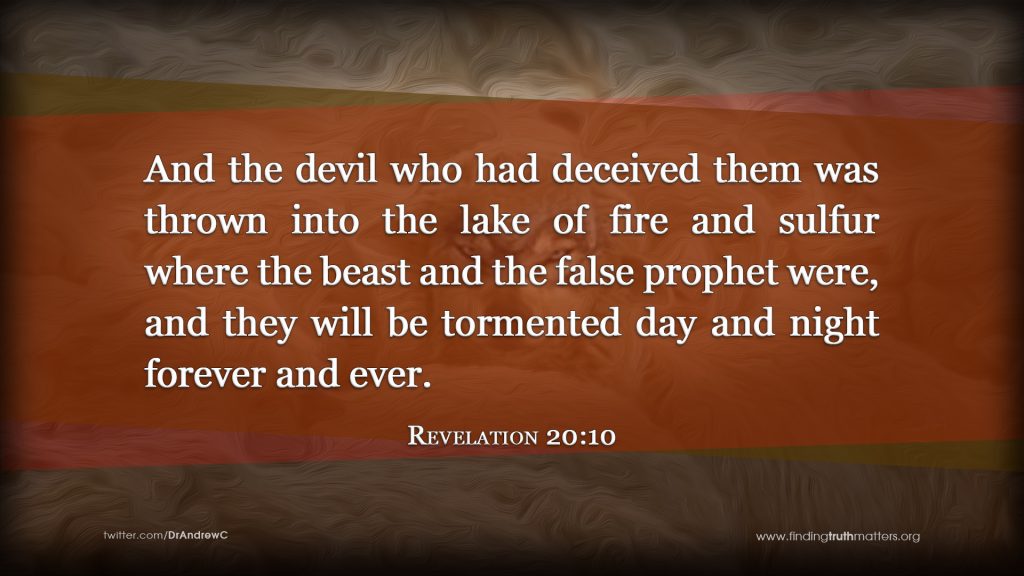 The first Adam had succumbed to the temptations of the devil, but “the last Adam” (1 Cor. 15:45) when tempted by the devil, did not (Matt. 4:1-11). The first Adam was ‘destroyed’ by the devil, but the Last Adam destroyed the works of the devil by His atoning sacrifice (1 Jn 3:8).
The first Adam had succumbed to the temptations of the devil, but “the last Adam” (1 Cor. 15:45) when tempted by the devil, did not (Matt. 4:1-11). The first Adam was ‘destroyed’ by the devil, but the Last Adam destroyed the works of the devil by His atoning sacrifice (1 Jn 3:8).
B. Redemption
1. Atonement
 It was God’s predestined plan that the exact imago Dei, His eternal Son, would accomplish the Father’s plan of redemption by His atoning death – which has eternally atoned for the sins of other divine image bearers (Eph. 3:11). “[Christ] entered once for all into the holy places, not by means of the blood of goats and calves but by means of His own blood, thus securing an eternal redemption” (Heb. 9:12). The power of sin was broken by the sacrifice of the sinless imago Dei (Heb. 9:26).
It was God’s predestined plan that the exact imago Dei, His eternal Son, would accomplish the Father’s plan of redemption by His atoning death – which has eternally atoned for the sins of other divine image bearers (Eph. 3:11). “[Christ] entered once for all into the holy places, not by means of the blood of goats and calves but by means of His own blood, thus securing an eternal redemption” (Heb. 9:12). The power of sin was broken by the sacrifice of the sinless imago Dei (Heb. 9:26).
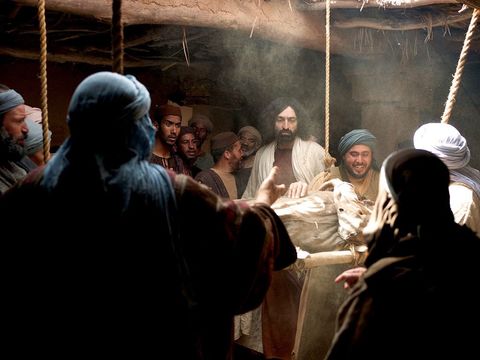
2. Resurrection
Christ’s resurrection from the dead declared that His atoning sacrifice had also defeated the power of death (Rom. 6:9), thus securing for all the redeemed divine image bearers, life beyond the grave in a gloriously resurrected body of which Christ was the firstfruits (1 Cor. 15:20; Col. 1:18).
3. Ascension
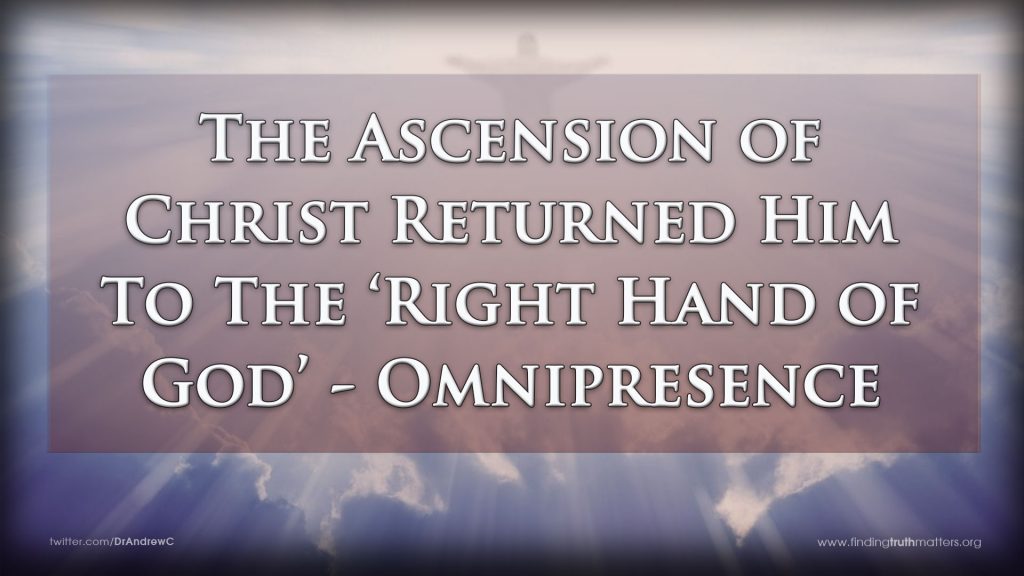 The ascension of Christ was an integral element of the divine plan of redemption. Just prior to His ascension, Peter tells us that sometime between Jesus’ death and ascension He had ‘preached’ to the spirits kept in ‘prison’ (Gr. tartarus) who had been linked to the events result in the flood of Noah.
The ascension of Christ was an integral element of the divine plan of redemption. Just prior to His ascension, Peter tells us that sometime between Jesus’ death and ascension He had ‘preached’ to the spirits kept in ‘prison’ (Gr. tartarus) who had been linked to the events result in the flood of Noah.
For if God did not spare angels when they sinned, but cast them into hell (tartarus) and committed them to chains of gloomy darkness to be kept until the judgment; if He did not spare the ancient world, but preserved Noah, a herald of righteousness, with seven others, when he brought a flood upon the world of the ungodly…then the Lord knows how to rescue the godly from trials, and to keep the unrighteous under punishment until the day of judgment. (2 Pet. 2:4-5, 9)
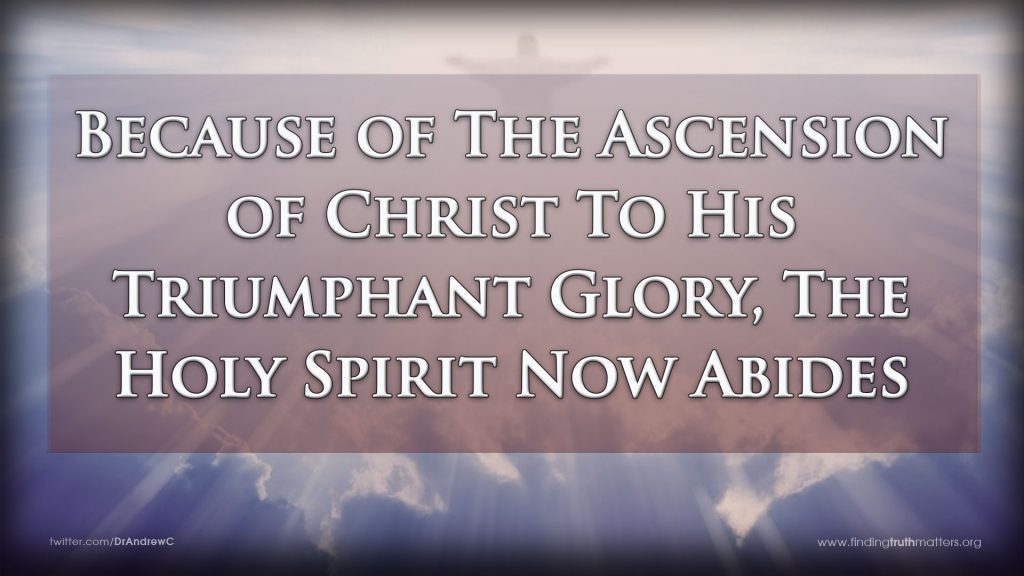 Having pronounced His judgment on these condemned fallen heavenly beings prior to His ascension, Christ led these condemned captives out of their temporary captivity at His ascension to their final judgment; and, then shortly after His ascension, sent the Holy Spirit to give gifts to men. “Therefore it says, ‘When He ascended on high He led a host of captives, and He gave gifts to men.’ (In saying, ‘He ascended,’ what does it mean but that He had also descended into the lower regions, the earth? He who descended is the one who also ascended far above all the heavens, that He might fill all things)” (Ephesians 4:8-10).
Having pronounced His judgment on these condemned fallen heavenly beings prior to His ascension, Christ led these condemned captives out of their temporary captivity at His ascension to their final judgment; and, then shortly after His ascension, sent the Holy Spirit to give gifts to men. “Therefore it says, ‘When He ascended on high He led a host of captives, and He gave gifts to men.’ (In saying, ‘He ascended,’ what does it mean but that He had also descended into the lower regions, the earth? He who descended is the one who also ascended far above all the heavens, that He might fill all things)” (Ephesians 4:8-10).
IV. The Glorification of the Sons of God
A. The Vanquishing of Evil
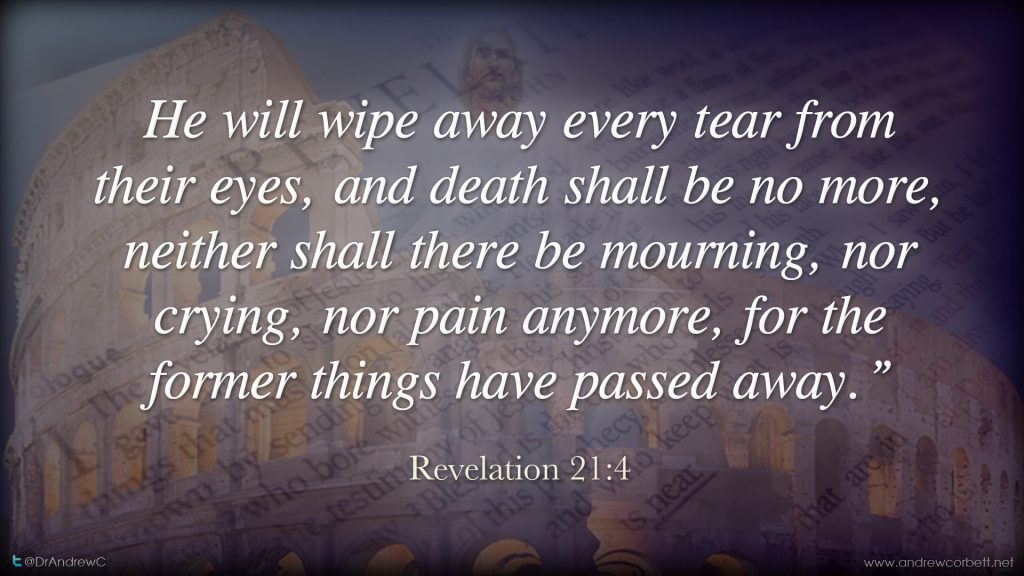 The closing book of the bible reveals the ultimate doom of the devil as the result of Christ’s work of redemption. “And the devil who had deceived them was thrown into the lake of fire and sulfur where the beast and the false prophet were, and they will be tormented day and night forever and ever” (Rev. 20:10). Evil will one day be ultimately vanquished. But God’s plan of redemption for His image bearers reveals that there is – and will be – one more phase of the imago Dei – our glorification.
The closing book of the bible reveals the ultimate doom of the devil as the result of Christ’s work of redemption. “And the devil who had deceived them was thrown into the lake of fire and sulfur where the beast and the false prophet were, and they will be tormented day and night forever and ever” (Rev. 20:10). Evil will one day be ultimately vanquished. But God’s plan of redemption for His image bearers reveals that there is – and will be – one more phase of the imago Dei – our glorification.
B. Eternal glory
Romans 8 reveals the fifth phase of the imago Dei which includes: (i) the conformity of the redeemed to the image of His Son – who is the exact likeness of the Father (Rom. 8:29); and, (ii) their glorification as the sons of God (Rom. 8:17, 21, 30). Thus, while the original divine image bearers fell into sin, which estranged them from God and brought death, and then the nation of Israel as His “son” also failed to live up to being His divine image bearers to the world, the eternal Son of God conquered sin and death and began to undo the effects of the Fall. This will eventually culminate in the redeemed being glorified and united with God. It also has a redemptive element for all creation which will finally be renewed (Rom. 8:21; Rev. 21:3-5). Until then, we, the redeemed, have a great responsibility to live up.
C. Until then
We have seen that God’s redemptive plan which included the plan to vanquish evil from the universe was linked to each phase of the imago Dei which was ultimately accomplished by the exact imago Dei – Christ. Penultimately it also includes the transformation of all the redeemed image bearers who will be glorified and become like Christ and given a “divine nature” (2 Pet. 1:4). What would God’s plan of redemption for His image bearers and the vanquishing of evil have looked like if mankind had not fallen? In C.S. Lewis’s Perelandra he creatively imagines what it might have resembled by telling a fictional story about God creating another set of innocent image bearers on a planet called ‘Perelandra’. In this account, the Evil One similarly arrives just as the woman has been created and focuses his temptations exclusively on her. But he fails to tempt the Perelandrian Ish’ah and soon afterwards meets his doom (Lewis 2005, 64). Meanwhile, the newly created man and woman ‘ascend’ a mountain to meet with God (“Maleldil”) where they are glorified and coronated as king and queen by him.
While Lewis may have imagined what our destiny might have resembled if our forebears had not sinned, our world has turned out to be more like another of Lewis’s book series – Narnia. In fact, Brian Williams (2021) wrote, C. S. Lewis, Pre-Evangelism For A Post- Christian World. Why Narnia might be more real than we think, in which he makes this argument. In Lewis’s Narnian world, God’s created beings who have also fallen and He must enter into it in the form of one of His creatures to redeem it. Having done so, evil is still present, until ‘the last battle’ where evil is finally vanquished. And in this sense, Williams may well be correct that our world is more like Narnia than we realise.
Thus, the biblical account of God’s eternal plan of redemption to vanquish evil from the universe has involved each of the phases of the imago Dei – Adam, the Woman, Israel, Christ, and finally the glorification of the redeemed. But all the credit for it being accomplished is due to the work of the ultimate and exact imago Dei, the Lord Jesus Christ. In the meantime, we live in a “now, but not yet” phase of God’s plan.
Dr. Andrew Corbett, May 2022
Related article: Why Women Really Really Matter and Why Satan Really Really Hates Them
_________________________
REFERENCE LIST
Heiser, Michael S. 2020. Demons: What the Bible Really Says about the Powers of Darkness. Bellingham, WA: Lexham Press.
Lewis, Clive S. 2005 (1943). Perelandra. Voyage to Venus. London: HarperCollins.
Morris, Shane, and Scharl Jane. 2021. Embodied Sainthood: Gender and Dragon-Slaying. Colson Centre. https://www.colsoncenter.org/upstream-podcast/.
Ross, Hugh N. 2014. Navigating Genesis – A scientist’s journey through Genesis 1-11. Covina, CA: RTB Press.
Williams, Brian M. 2021. C. S. Lewis Pre-Evangelism For A Post- Christian World. Why Narnia might be more real than we think. Cambridge, OH: Christian Publishing House.
-
Sale!

5 Things We Need To Do To Break Our Church’s 200 Barrier, Premium Audio
$0.95 -
Sale!

A Morning With Izaak Walton – The Compleat Man, Premium Audio
$1.25 -
Sale!
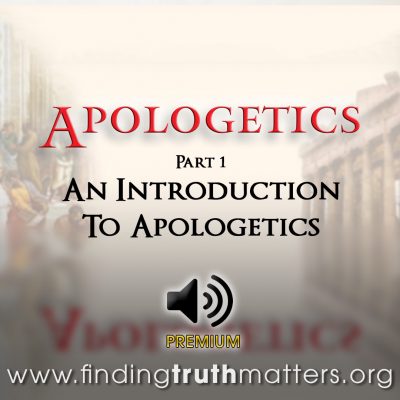
Apologetics Part 1 – Introduction To Apologetics, Premium Audio
$0.95 -
Sale!
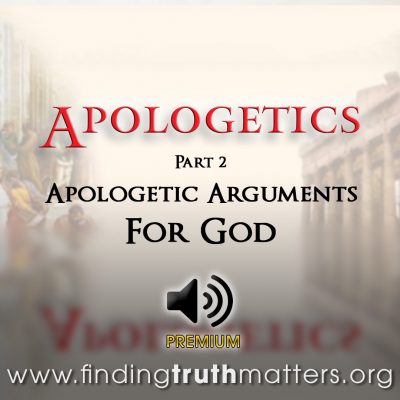
Apologetics Part 2 – The Apologetic Arguments For God, Premium Audio
$0.95







































0 Comments